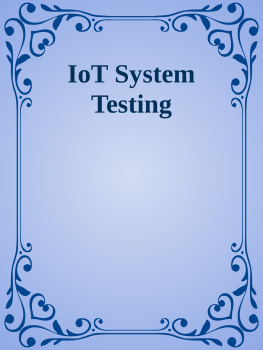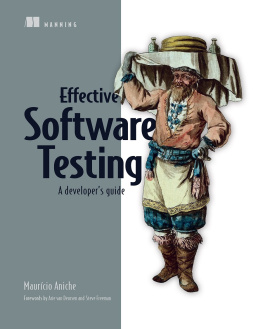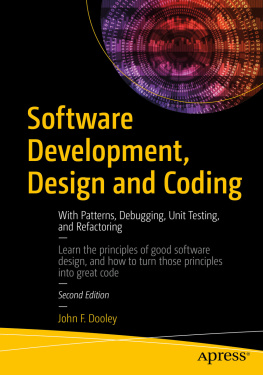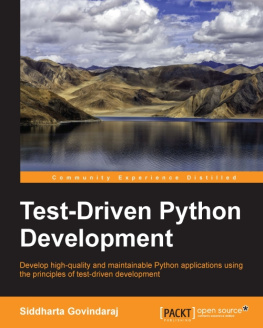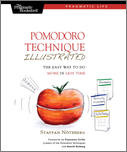Stephen Vance - Quality Code: Software Testing Principles, Practices, and Patterns
Here you can read online Stephen Vance - Quality Code: Software Testing Principles, Practices, and Patterns full text of the book (entire story) in english for free. Download pdf and epub, get meaning, cover and reviews about this ebook. year: 2013, publisher: Addison-Wesley Professional, genre: Computer. Description of the work, (preface) as well as reviews are available. Best literature library LitArk.com created for fans of good reading and offers a wide selection of genres:
Romance novel
Science fiction
Adventure
Detective
Science
History
Home and family
Prose
Art
Politics
Computer
Non-fiction
Religion
Business
Children
Humor
Choose a favorite category and find really read worthwhile books. Enjoy immersion in the world of imagination, feel the emotions of the characters or learn something new for yourself, make an fascinating discovery.

- Book:Quality Code: Software Testing Principles, Practices, and Patterns
- Author:
- Publisher:Addison-Wesley Professional
- Genre:
- Year:2013
- Rating:5 / 5
- Favourites:Add to favourites
- Your mark:
Quality Code: Software Testing Principles, Practices, and Patterns: summary, description and annotation
We offer to read an annotation, description, summary or preface (depends on what the author of the book "Quality Code: Software Testing Principles, Practices, and Patterns" wrote himself). If you haven't found the necessary information about the book — write in the comments, we will try to find it.
Test-driven, test-first, and test-early development practices are helping thousands of software development organizations improve their software. Now, in Quality Code: Software Testing Principles, Practices, and Patterns, Stephen Vance builds on all thats been learned about test-driven development, helping you achieve unprecedented levels of first-time quality. Using real-world code examples, this guide introduces patterns, principles, and more than two dozen detailed techniques for testing any software system more fully, effectively, and painlessly. Vance presents a conceptual framework to help you focus your efforts and design recommendations for improving testability across the software lifecycle, and also provides hands-on guidance to simplify testing of the full spectrum of code constructs. Youll learn how to choose the best testing techniques for every situation, from the most common scenarios to threading. Two complete case studies put it all together, walking you through testing a brand-new Java application and an untested legacy JavaScript jQuery plugin. Whether youre developing cutting-edge code for a new start-up, or maintaining an unruly old system, this guide will help you deliver exactly what you need: quality code.
Simplify unit testing of all your codeand improve integration and system testing
Delineate intent and implementation to promote more reliable and scalable testing
Overcome confusion and misunderstandings about the mechanics of writing tests
Test side effects, behavioral characteristics, and contextual constraints
Understand subtle interactions between design and testabilityand make them work for, not against, you
Discover core principles that guide your key testing decisions
Explore testing getters/setters, string handling, encapsulation, override variations, visibility, singleton patterns, error conditions, and more
Reproduce and test complex race conditions deterministically
Stephen Vance: author's other books
Who wrote Quality Code: Software Testing Principles, Practices, and Patterns? Find out the surname, the name of the author of the book and a list of all author's works by series.

